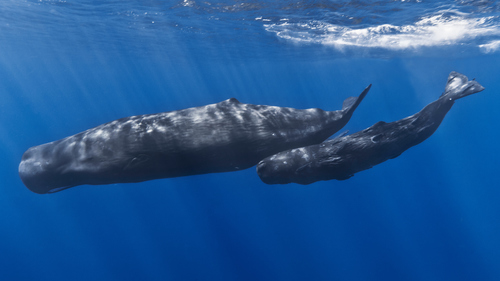
Sperm Whale
The sperm whale, Physeter macrocephalus, dominates the ocean with its colossal head and deep-diving prowess. This apex predator thrives in deep waters, using echolocation to hunt squid. Its unique adaptations highlight its vital role in marine ecosystems, captivating both scientists and nature enthusiasts.
60 years
Lifespan
Length: 14.9352 - 17.9832 m
Size
Grey, White
Color
23 mph
Top Speed
Vulnerable
Conservation Status
Unknown
Population Trend
Characteristics
Physeter macrocephalus, commonly known as the sperm whale, is the largest toothed predator. Found in deep oceans, it has a massive head making up a third of its body length. Known for its deep dives and echolocation abilities, it primarily feeds on squid.
Distribution Range of the Sperm Whale
The Physeter macrocephalus, commonly known as the sperm whale, is found in all of the world's oceans. Its distribution is widespread, ranging from the equator to the edges of the polar ice packs in both the Northern and Southern Hemispheres. Notably, it is prevalent in deep oceanic waters and is less common in the shallow seas and bays.
Sperm Whale's Habitat
Environmental Conditions
Sperm whales inhabit deep open ocean waters, typically found in areas where the ocean depth is at least 1,000 meters (3,280 feet). They prefer waters with sufficient prey availability, usually around continental shelves, seamounts, and canyons where their primary food source, squid, is abundant. The species is known to dive to great depths, often exceeding 1,000 meters, to hunt.
Ecological Niche
Sperm whales are apex predators primarily feeding on squid, including the giant squid, as well as fish. Their ecological niche involves deep-sea hunting, facilitated by their highly developed echolocation abilities, which allow them to navigate and detect prey in the dark ocean depths. This niche role is critical in maintaining the balance of the deep-sea ecosystem.
Copyright @ Nature Style Limited. All Rights Reserved.
 English
English